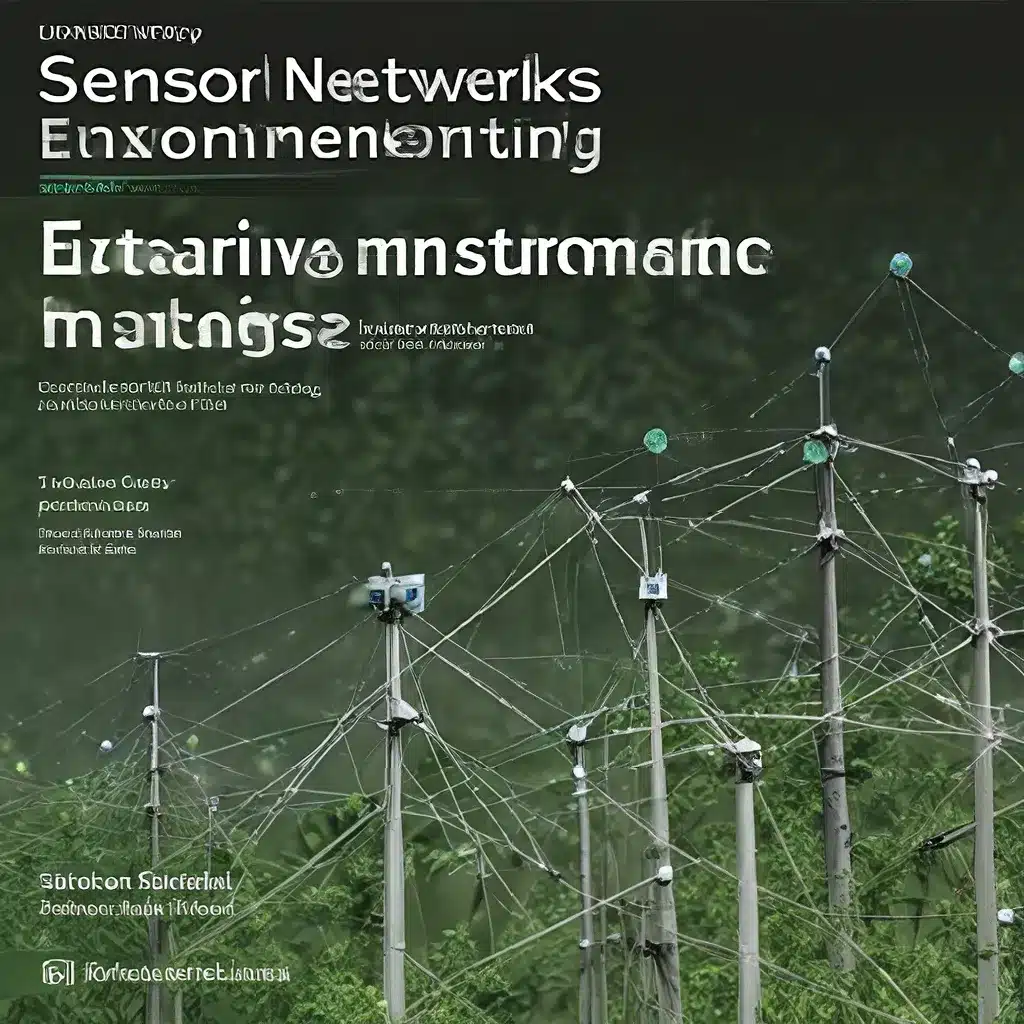
As the world becomes increasingly connected through the Internet of Things (IoT), sensor networks have emerged as a vital tool for environmental monitoring and management. These interconnected systems of sensors, data processing, and communication technologies are revolutionizing the way we understand and interact with our natural surroundings.
The Evolving Landscape of Sensor Networks
Sensor networks are complex, multi-layered systems that integrate a range of technologies, from low-power wireless sensors to cloud-based data analytics. At the core of these networks are the sensors themselves, which are designed to collect a wide variety of environmental data, such as air quality, water levels, temperature, and wildlife activity.
One of the key advantages of sensor networks is their ability to continuously monitor environmental conditions, providing a real-time and highly granular understanding of the natural world. This is a significant improvement over traditional manual data collection methods, which are often time-consuming, labor-intensive, and limited in scope.
Innovative Approaches to Environmental Monitoring
As sensor networks have become more sophisticated, researchers and industry leaders have been exploring innovative approaches to environmental monitoring. One such approach is the use of autonomous drones and aerial sensors to collect data over large geographic areas, enabling the rapid assessment of environmental conditions in remote or difficult-to-access locations.
Another innovative approach is the integration of sensor networks with machine learning and artificial intelligence. By applying advanced data analytics to the vast amounts of data collected by sensor networks, researchers can identify patterns, predict environmental changes, and optimize resource management strategies.
For example, smart city initiatives have leveraged sensor networks and IoT technologies to monitor air quality, manage waste, and optimize energy usage in urban environments. These data-driven approaches have the potential to improve the efficiency and sustainability of our communities, while also enhancing the quality of life for residents.
Addressing Challenges in Sensor Network Design
Despite the many benefits of sensor networks, there are also significant challenges that must be addressed in their design and implementation. One of the primary concerns is data security and privacy, as these networks often collect sensitive or personal information about individuals and the environment.
To address these concerns, researchers and industry partners have been developing advanced encryption and authentication protocols, as well as data governance frameworks to ensure the protection of sensitive information.
Another key challenge is the energy efficiency of sensor networks, as many of the devices within these systems are battery-powered and deployed in remote locations. Energy-harvesting technologies, such as solar panels and thermoelectric generators, have emerged as promising solutions to this problem, enabling sensor nodes to operate autonomously for extended periods without the need for frequent battery replacement.
The Future of Sensor Networks in Environmental Monitoring
As the demand for environmental monitoring and resource management continues to grow, the role of sensor networks is only expected to become more crucial. Advancements in sensor technology, communication protocols, and data analytics will drive the development of increasingly sophisticated and versatile sensor network systems.
One exciting future direction for sensor networks is the integration of 5G technology, which promises faster and more reliable data transmission, as well as enhanced edge computing capabilities. This could enable real-time decision-making and automated responses to environmental changes, revolutionizing the way we manage and protect our natural resources.
Furthermore, the collaborative nature of sensor networks, which often involve partnerships between government, industry, and academia, will continue to foster innovative solutions and accelerate the adoption of these transformative technologies.
By harnessing the power of sensor networks, we can unlock a new era of environmental stewardship, where data-driven insights and intelligent automation empower us to safeguard our planet and ensure a sustainable future for generations to come.